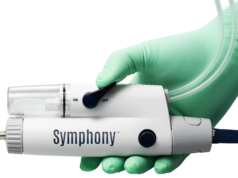
At the THE VEINS at VIVA meeting (10–11 September, Las Vegas, USA), Esther Kim (Vanderbilt University Medical Center, Nashville, USA) gave a presentation on venous thrombosis in unusual locations, noting that such thromboses tend to occur in younger patients and those with malignancy, and that thrombophilia has a role in most cases and testing for it may be considered.
Kim also noted that aetiology of such thromboses differs based on local and systemic factors, and that recommendations for anticoagulation differ according to location and circumstance. Thrombosis at any site other than the lower limbs and pulmonary arteries is considered unusual, Kim said, including the cerebral veins, upper extremity veins, splanchnic veins, renal veins and godal veins. Such thromboses are clinically challenging not only because they are so rare, but also because their outcomes can be severe. The lack of associated clinical trials also means that there is little guidance to direct management.
Cerebral vein thrombosis, for example, presents with headaches, seizures, focal deficits and altered consciousness. Patients have intracranial infarction, localised oedema, and haemorrhage. These thromboses affect 3–4 million patients per year, and are mostly found in female patients (75%) and those less than 40 years of age. One-month mortality is 4.3–13%, rising to 7.7–17.7% at six months, while 10% of patients suffer permanent neurologic impairment. Its annual incidence of recurrence is 2–2.4 per 100 patient years.
Kim explained that contributory factors are identifiable in 85% of cases, the most common of which include oral contraception, pregnancy/puerperium, thrombophilia, vasculitis, myeloproliferative neoplasm, infections, or head injuries, neurologic procedures or lumbar punctures.
Anticoagulation is the standard treatment for cerebral vein thrombosis, although endovascular treatment can be considered “if deterioration occurs despite intensive anticoagulation treatment,” according to a American Heart Association/American Stroke Association scientific statement. A recent trial—TO-ACT (thrombolysis or anticoagulation for cerebral venous thrombosis)— found that at 12 months, endovascular treatment did not improve outcomes for severe cerebral venous thrombosis patients. Kim also described splanchnic vein thrombosis, which includes hepatic vein, portal vein, mesenteric, and splenic vein thrombosis. Long-term effects include liver cirrhosis and portal hypertension, and recurrence over two years is 3.5 per 100 patient years.
Anticoagulation is also the first-line treatment for splanchnic vein thrombosis, despite the risk of bleeding due to cirrhosis and varices. Kim said that there are no randomised controlled trials to guide treatment, and important elements of decision making include whether the patient is symptomatic or asymptomatic, and whether the disease is chronic or acute. Upper extremity thromboses account for 5–10% of all deep vein thromboses, affecting 16/100,000 people each year. The rate of pulmonary embolism for these patients is 5%, and of upper extremity post-thrombotic syndrome is 20%. Upper extremity deep vein thrombosis (DVT) recurrence is approximately 8% at five years.
Renal vein thrombosis has a variable clinical presentation, including flank pain, haematuria, anorexia, nausea, fever, asterixis and acute kidney injury. At a mean followup of 42 months, a 2012 Mayo study found a recurrent venous thromboembolism rate of 1/100 patient years, with a mean time to recurrence of 30.5 months.
The last type of uncommon venous thrombosis addressed was ovarian vein thrombosis, which presents with abdominal pain, tenderness, fever and tachycardia. It is often pregnancy-related, and occurs in up to 0.18% of all pregnancies. Non-pregnancy-related causes include post-abortion infection, pelvic surgery, pelvic inflammatory disease, and inflammatory bowel disease. A 2012 study found that 81.1% of ovarian thromboses were related to pregnancy, and thrombus extension was seen in 25.7% of cases. The recurrence rate was low at 40-month follow-up, 0% for pregnancy-related thromboses and 7.1% for non-pregnancy related thromboses.
“Venous thrombosis in uncommon sites tends to occur in younger patients and those with malignancy,” Kim concluded. “Aetiology differs depending on local and systemic factors, and recommendations for anticoagulation differ according to location and circumstance.”









